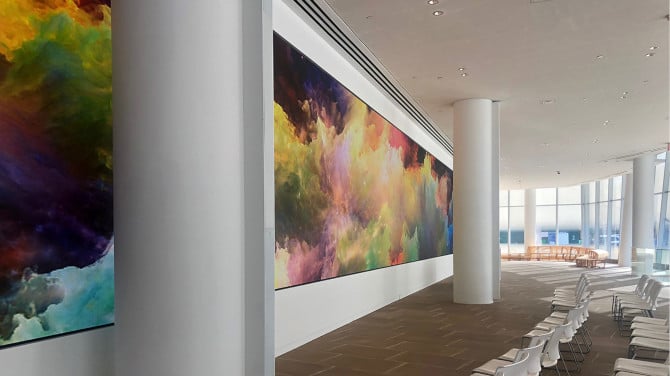Exploring the Longevity of Light Emitting Diode Wall Panels in Contrast to Traditional Screen Methods
Exploring the Longevity of Light Emitting Diode Wall Panels in Contrast to Traditional Screen Methods
Blog Article
Light-emitting diode wall screens have become progressively popular in recent times, particularly in settings like schools, corporate spaces, and community spaces. These panels use LED lights (LEDs) to create bright and lively visuals. One of the most significant benefits of LED technology is its longevity in contrast to conventional screen technologies, such as cathode ray monitors (CRTs) and liquid display screens. Grasping the distinctions in lifespan and functionality between these options can help buyers make informed decisions about their display requirements.
Classic screen methods, like CRTs, have been present for numerous years. They were frequently used in televisions and PC screens. However, CRTs have a shorter lifespan, typically lasting approximately 10,000 to 20,000 hours of use. This means that after a couple years, users may observe a decline in picture quality, such as fading or color distortion. In comparison, LED wall screens can last significantly longer, often exceeding 50,000 hrs. This extended lifespan means that users can enjoy consistent performance without the need for regular replacements.
Another important factor to take into account is power conservation. LED wall panels utilize less power than conventional screens, which not only helps the environment but also lowers power you could try here expenses. For instance, while a CRT screen may consume approximately 100 watts of power, an LED panel can consume as few as 30 to 50 watts. This discrepancy in energy usage contributes to the overall durability of LED technology, as lower power consumption generates minimal heat. Excessive thermal energy can harm electronic components, resulting to a reduced lifespan for traditional screens.
In addition to their extended lifespan and energy efficiency, LED panel screens also offer superior visual clarity. They offer brighter hues and better contrast, making them perfect for various uses, from marketing to learning presentations. The technology behind LED panels enables for a broader sight angle, meaning that images stay sharp and lively even when viewed from the side. This is a significant benefit over traditional displays, which often experience from hue deformation and reduced brightness at wider perspectives.
In conclusion, the durability of LED wall screens in contrast to traditional display methods is a key factor for buyers to consider. With durations that can surpass 50,000 hrs, power conservation, and superior image quality, LED technology provides many benefits. As technology continues to progress, LED wall panels are likely to become even more prevalent in various environments. Grasping these distinctions can help individuals and organizations make improved decisions when purchasing in screen innovation, ensuring they receive the optimal value for their needs.